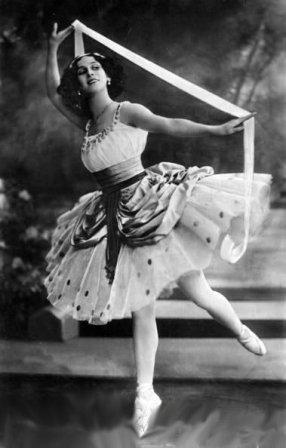Russian prima ballerina Anna Pavlova is one of the most celebrated ballet dancers of her time. Despite the troubles she faced growing up as a ballerina, she was able to overcome them and rise to the top. Pavlova was one of the Imperial Russian Ballet’s principal artist and originated the role of The Dying Swan.
On February 12, 1881, Anna Pavlovna Pavlova was born to Lyubov Feodorovna and an unknown father (the two were not married). It is speculated that her father was Lazar Polyakov. At three years old, Matvey Pavlov is said to have adopted her when he married her mother.
When Pavlova was nine, she auditioned for the Imperial Ballet School after seeing a performance of The Sleeping Beauty at the Imperial Mariinsky Theater. She was not originally accepted into the school because of her age and she came across as sickly. At ten years old, the school finally accepted her. Pavlova’s first ever performance was Marius Petipa’s Un conte de fées, or A Fairy Tale.
However, ballet did not come easy to Pavlova. Her feet were severely arched and her ankles too thin and legs too long, especially for a ballerina of her time. Other students gave her nicknames such as La petite sauvage, translating into “the little savage”. But, Pavlova never gave up. She trained harder and took extra classes. At eighteen, she graduated from the Imperial Ballet school and was admitted into the Imperial Ballet. While most start of in the Corps de ballet, Pavlova started as a coryphée, a higher rank,
At her first performance, Les Dryades prétenduesm, or The False Dryads, after joining the Imperial Ballet, she was highly praised from critics. Often times her knees were bent and she had bad turnout at her performances. Pavlova was a very enthusiastic performer, once falling into the prompter’s box while doing a set of turns. She continued to perform in ballets such as The Sleeping Beauty, The Pharaoh’s Daughter, La Camargo, and many others. Still, her weak ankles provided difficulty performing in certain roles.
Petipa favored Pavlova as she continued to climb through the ranks as a ballerina. He gave her the roles of Paquita in the ballet Paquita, Princess Aspicia in The Pharaoh’s Daughter, and many other lead roles in famous ballets. In 1906, Pavlova was given the rank of prima ballerina after her performance in Giselle. Previously, she had been promoted to danseuse in 1902, then première danseuse three years later.
In 1901, Mathilde Kschessinska, another Russian prima ballerina, had trained Pavlova for Nikya in the ballet La Bayadère. Kschessinska had been pregnant and was hoping that Pavlova would fail at the role. The audiences loved Pavlova’s performance in the ballet though.
To make it easier with her small toes and weak ankles, Pavlova added hard wood to her pointe shoes for support. Most pointe shoes today have wood, but during Pavlova’s time, ballerinas were supposed to be able to hold their weight without support. Though some ballerinas did it, many considered it cheating.
Michel Fokine choreographed The Dying Swan solo for Pavlova that is danced to Le cygne from Camille Saint-Saëns’s The Carnival of the Animals. Today she is best known for originating this role. Pavlova also created many solos for herself such as The Dragonfly.
When the Ballets Russes had been newly created, Pavlova worked for a short period of time with the founder, Sergei Diaghilev. Pavlova was supposed to dance in Mikhail Fokine’s The Firebird as the main role, but the music was too much for her liking. She preferred more melodious and classical music to dance to. Another Russian prima ballerina, Tamara Karsavina, was given the role instead. The two had a long lasting rivalry.
Pavlova began traveling around the world performing with a company she had created. She performed mainly solos and pieces she had choreographed for herself and parts of Petipa’s works.
In 1912, Pavlova had left Russia for quite some time and decided to move to London, England. The house in which she lived, the Ivy House, is still standing today and even has a statue of Pavlova. She worked to develop ballet in England. Alicia Markova was influenced greatly by Pavlova.
For a few years between 1914-1917, Pavlova was featured in the United States along with other Russian dancers she had previously worked with.
Victor Dandré and Anna Pavlova were married, though the time of their marriage is unknown. Dandré mentioned it in his biography of her, though not much is known about their marriage. He was Pavlova’s manager. When Dandré died in 1944 his ashes were placed below his wife’s. He noted in his biography that Pavlova was a huge lover of animals.
Pavlova was touring in The Hague when diagnosed with pneumonia. If she had the operation the doctors required her to, it would have put an end to her career as a dancer. Pavlova responded with, “If I can’t dance then I’d rather be dead,” and refused to be operated on. On January 23, 1931 at forty-nine years old, just short of fifty, Anna Pavlova died of pleurisy.





